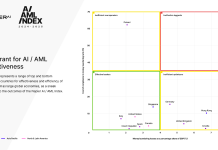Choosing between building your own anti-money laundering (AML) screening or monitoring tools and buying from a provider is not as straightforward as it might seem.
According to Salv, who recently put together an ebook on the topic of building your own AML screening or monitoring tools, while creating internal solutions may appear to offer greater control and cost savings – the complexity and risks involved often suggest otherwise.
Take the example of Synapse, a US Banking as a Service provider, which encountered a significant loss of $85m in customer funds during the development of its sanctions screening capability.
Banks and FinTechs frequently face this ‘build versus buy’ dilemma. The allure of custom-made solutions is strong, especially for those who have been let down by SaaS providers in the past or are wary of the risks tied to external services. However, the responsibilities tied to compliance tools are immense, tasked with the crucial role of filtering out criminal activities and safeguarding financial assets.
The process of developing these tools in-house is fraught with challenges that extend beyond initial implementation. At Salv, for instance, the firm claims it has encountered many clients who underestimated the ongoing complexity and cost associated with maintaining and scaling their AML solutions.
Moreover, focusing on building compliance tools can divert resources from core product development, potentially detracting from customer-focused solutions that drive revenue and business growth. The day-to-day demands of updating, managing, and securing AML platforms also mean that in-house teams are continually tied up, reducing their capacity to innovate or respond to market changes.
Additionally, the concentration of knowledge within a small team poses significant long-term risks. If key team members leave, the company could lose critical expertise, which is difficult to replace. Historical examples, such as banks still reliant on outdated COBOL mainframe technology, highlight the dangers of knowledge siloing.
In terms of regulatory compliance, in-house tools must not only perform effectively but also meet auditor standards and integrate seamlessly with existing systems. Salv has seen firsthand how the inability to explain or adapt the workings of an AML system to auditors can create additional headaches.
Finally, the impending updates in regulations such as PSD3 and EU AMLR highlight the need for technologies capable of cross-border data sharing and collaboration with other financial institutions. Building such capabilities from scratch is not only challenging but may also isolate your platform if other institutions are unwilling to integrate with a proprietary system.
In conclusion, while building in-house AML tools offers certain advantages in terms of customization and initial control, the long-term costs, complexity, and risks often outweigh these benefits.
Find the e-book here.











